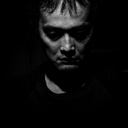1 Like
Warsaw, Poland: Here, in front of the monument to the heroes of the ghetto uprising, Willy Brands kneeled down in 1970. This gesture, which is internationally seen as a request for forgiveness for the crimes of the Nazis, helped as a strong symbol in the relaxation between East and West. Opposite is the Museum of the History of Polish Jews - POLIN.
In times when nationalism, racism or religious extremism seem to more and more people to solve their problems and worries, we must not forget the inhuman abyss this leads to: Until the invasion of Poland by the inhuman German Nazi regime in 1939, the Jewish community of Warsaw had about 350,000 members. In the so-called ghetto, they were crowded together by the Nazis from the beginning of October 1940. The other residents had to leave their homes. In addition, there were other Jews from other areas, so that the population grew to about 500,000. In mid-November 1940, a wall closed off the area and the people were hardly supplied. Diseases and epidemics spread. The dead piled up in the streets. In July 1942, the Nazis began to disband the ghetto. At that time, a quarter of the population, more than 100,000 people, had already fallen victim to the terrible conditions. Gradually, the inhabitants were taken to extermination camps to murder them. After only about 65,000 people lived in the ghetto at the beginning of 1943, the Jewish combat organization ZOB started an uprising on April 19, which had been violently suppressed until mid-May. Survivors were shot immediately or taken to an extermination camp. The residential buildings were then destroyed.




